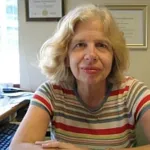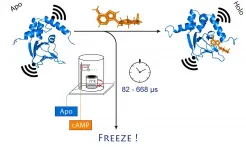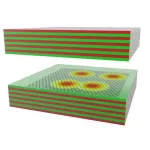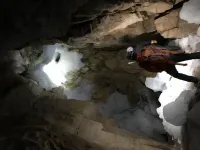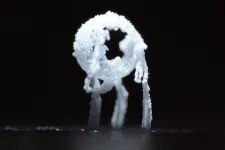(Press-News.org) ITHACA, N.Y. - Though more than 131 million Americans have received at least one dose of COVID-19 vaccine to date, public confusion and uncertainty about the importance of second doses and continued public health precautions threaten to delay a U.S. return to normalcy, according to Cornell-led research published April 28 in the New England Journal of Medicine.
In a nationally representative survey of more than 1,000 American adults conducted in February, less than half of respondents said they believed the Moderna and Pfizer-BioNTech vaccines provided strong protection against COVID-19 a week or two after a second dose, consistent with guidance from the U.S. Centers for Diseases Control and Prevention (CDC), the researchers found. One-fifth believed the vaccines provided strong protection after only one dose, and another 36% were unsure.
Among vaccinated survey respondents (19% of the sample), barely half reported being told about the timing of vaccine protection, and only slim majorities said they'd been advised to continue wearing masks, social distancing and avoiding crowds.
"Many Americans, including many of those who have already received a first vaccine dose, remain confused about the timing of protection and the necessity of a second dose," the researchers concluded. "Moreover, a large proportion of vaccinees report being uninformed about CDC guidance regarding the need to continue to take prophylactic measures."
The findings by an interdisciplinary, cross-college team were reported in "Beyond the First Shot - Covid-19 Vaccine Follow-through and Continued Protective Measures [LINK]." The co-authors are Jillian Goldfarb, assistant professor in the Department of Biological and Environmental Engineering in the College of Agriculture and Life Sciences; Sarah Kreps, the John L. Wetherill Professor in the Department of Government in the College of Arts and Sciences (A&S); Douglas Kriner, the Clinton Rossiter Professor in American Institutions in the Department of Government (A&S); and John Brownstein, professor at Harvard Medical School and chief innovation officer of Boston Children's Hospital.
Recent CDC data validates the authors' concerns about vaccine follow-through, showing that nearly 8% of Americans - more than 5 million people - who received a first Moderna or Pfizer-BioNTech shot last month had missed their scheduled second dose.
The research team warned that the problem could be more acute for minority racial and ethnic groups that historically have had higher attrition rates for multidose vaccines. The survey found Black and Latinx respondents were significantly less likely than whites to believe the vaccines provided strong protection after the second dose, and significantly more likely to be unsure.
"Failure to combat second-dose attrition among members of minority groups," the scholars wrote, "risks magnifying existing racial disparities in the virus's human toll."
Regarding the need to continue wearing masks after being vaccinated - just updated by the CDC - the researchers found broad support. More than 80% of respondents agreed or strongly agreed, with support highest among those age 60 or over, those already vaccinated, and Black people. Reflecting a national partisan divide, Republicans were significantly less supportive than Democrats of postvaccination mask wearing.
Less than a third of vaccinated respondents said they were told that their risk of transmitting the virus to others is unknown, one of the key reasons for continuing to wear masks in many settings.
"These findings suggest that there is a real need - and opportunity - for the medical community to provide fuller guidance and greater contextual explanations to vaccinees," the authors wrote, "about how life can change after vaccination as we gradually return to normalcy."
In particular, they said, enhanced education at the time of the first dose holds "considerable promise" for combatting second-dose attrition.
Goldfarb said she became concerned about a lack of information transfer when she received a first shot at a county-run site that was highly efficient, but provided no information about the importance of second shots or continued protective measures.
"It really sunk in that there could be a problem with vaccine attrition even more so than overcoming hesitancy," Goldfarb said. "We could end up prolonging the pandemic because people don't follow through."
Kriner said the survey results reflected the fragmented, public-private nature of the nation's vaccine administration involving states, counties and pharmacies, each providing different levels of information in different ways.
"This is an opportunity to take this fragmented system we have and think about how we can ensure people get the information they need to protect themselves and public health," Kriner said, "until viral circulation is much lower than it still is."
Kreps said the research illustrated the need to think about more than just vaccine safety and effectiveness, and to treat public behavior as a medical issue.
"You can't understand how this this virus will continue to progress," Kreps said, "unless you understand the behavior of the public that is receiving this vaccine."
INFORMATION:
NEW YORK, NY-- Diagnosing chronic kidney disease, which is often undetected until it causes irreversible damage, may soon become automated with a new algorithm that interprets data from electronic medical records.
The algorithm, developed by researchers at Columbia University Vagelos College of Physicians and Surgeons, automatically scours a patient's electronic medical record for results of blood and urine tests and, using a mix of established equations and machine learning to process the data, can alert physicians to patients in the earliest stages of chronic kidney disease.
A study of the algorithm was published in the journal npj Digital Medicine in April.
"Identifying ...
These mysterious earthquakes originate between 400 and 700 kilometers below the surface of the Earth and have been recorded with magnitudes up to 8.3 on the Richter scale.
Xanthippi Markenscoff, a distinguished professor in the Department of Mechanical and Aerospace Engineering at the UC San Diego Jacobs School of Engineering, is the person who solved this mystery. Her paper " END ...
In an effort to fight the millions of tons of marine litter floating in the ocean, Florida State University researchers have developed a new virtual tool to track this debris.
Their work, which was published in Frontiers in Marine Science, will help provide answers to help monitor and deal with the problem of marine litter.
Eric Chassignet, director of the Center for Ocean-Atmospheric Prediction Studies and professor in the Department of Earth, Ocean and Atmospheric Science.
"Marine litter is found around the world, and we do not fully understand its ...
Researchers at the University of Bonn and the research center caesar have succeeded in ultra-fast freezing proteins after a precisely defined period of time. They were able to follow structural changes on the microsecond time scale and with sub-nanometer precision. Owing to its high spatial and temporal resolution, the method allows tracking rapid structural changes in enzymes and nucleic acids. The results are published in the Journal of the American Chemical Society.
If you want to know what the spatial structure of a biomolecule looks like, you have a formidable arsenal of tools at your disposal. The most popular ones are electron microscopy and X-ray diffraction, which can reveal even the smallest ...
Researchers have long noted that readers with dyslexia employ eye movements that are significantly different from non-dyslexics. While these movements have been studied in small sample sizes in the past, a new paper written by Concordia researchers and published in the Nature journal END ...
The ability to turn on and off a physical process with just one photon is a fundamental building block for quantum photonic technologies. Realizing this in a chip-scale architecture is important for scalability, which amplifies a breakthrough by City College of New York researchers led by physicist Vinod Menon. They've demonstrated for the first time the use of "Rydberg states" in solid state materials (previously shown in cold atom gases) to enhance nonlinear optical interactions to unprecedented levels in solid state systems. This feat is a first step towards realizing chip-scale scalable single photon switches.
In solid state systems, exciton-polaritons, half-light ...
Nearly one quarter of the land in the Northern Hemisphere, amounting to some 9 million square miles, is layered with permafrost -- soil, sediment, and rocks that are frozen solid for years at a time. Vast stretches of permafrost can be found in Alaska, Siberia, and the Canadian Arctic, where persistently freezing temperatures have kept carbon, in the form of decayed bits of plants and animals, locked in the ground.
Scientists estimate that more than 1,400 gigatons of carbon is trapped in the Earth's permafrost. As global temperatures climb, and permafrost thaws, this frozen reservoir could potentially escape into the ...
Chestnut Hill, Mass. (4/28/2021) -- The vast frozen terrain of Arctic permafrost thawed several times in North America within the past 1 million years when the world's climate was not much warmer than today, researchers from the United States and Canada report in today's edition of Science Advances.
Arctic permafrost contains twice as much carbon as the atmosphere. But the researchers found that the thawings -- which expel stores of carbon dioxide sequestered deep in frozen vegetation -- were not accompanied by increased levels of CO2 in the atmosphere. The surprising finding runs counter to predictions that as the planet ...
About a quarter of a percent of the entire gross domestic product of industrialized countries is estimated to be lost through a single technical issue: the fouling of heat exchanger surfaces by salts and other dissolved minerals. This fouling lowers the efficiency of multiple industrial processes and often requires expensive countermeasures such as water pretreatment. Now, findings from MIT could lead to a new way of reducing such fouling, and potentially even enable turning that deleterious process into a productive one that can yield saleable products.
The findings are the result of years of work by recent MIT graduates Samantha McBride PhD '20 and Henri-Louis Girard PhD '20 with professor of mechanical ...
Two teams have created a new generation of highly specific CAR T cells, which safely cleared solid tumors in mice with mesothelioma, ovarian cancer, and the deadly brain cancer glioblastoma while outlasting and outperforming conventional CAR T cell designs. The results suggest these cells could minimize the risk of dangerous side effects and address the traditionally poor performance of CAR T cells against solid tumors in the clinic. CAR T cells are genetically modified human T cells and have shown impressive performance in patients with leukemia. However, CAR T cells don't work as well against solid tumors, as these cancers lack molecular targets that the cells can easily recognize. ...
